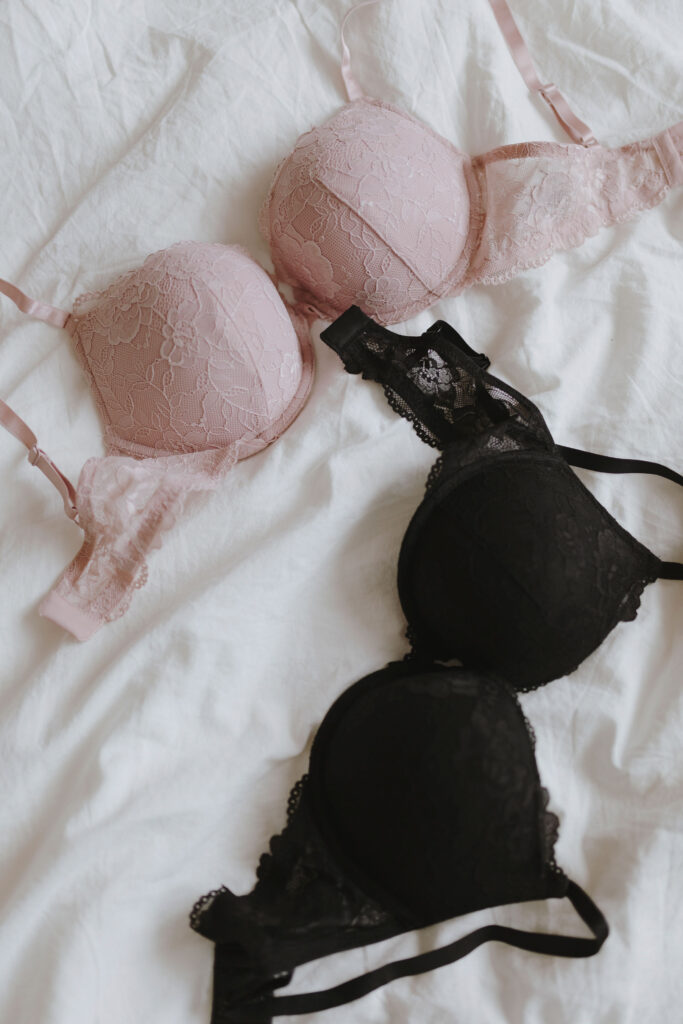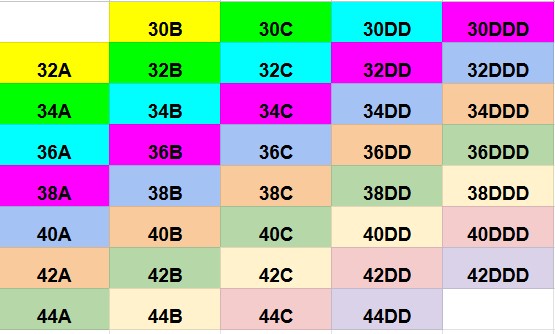There’s a concept around bra fitting that suggests bras having different band sizes and cup sizes can actually fit the same breast volume. But wait, haven’t we been talking about perfect fitting and choosing the right sizes so that our breasts fill in properly in the cups? Well, this is due to the way bra sizes are constructed: as the band size gets larger, the corresponding cup volume for a given cup letter also gets larger. In that same way, it can be said that as the band size gets smaller, the corresponding cup volume for a given cup letter gets smaller. Simply put, the band size and cup size may differ across a specific range but maintain the same volume.
What’s The Point of Sister Sizing?

If you’ve learned about the importance of choosing the right fit, you will come to learn as well that there’s no standard size that will go with a specific height and weight of a person. You can have the same breast volume as one individual but you will find that you might need wider or narrower bands so the size will be different in numerical value but still maintain the same volume of the cup. This is important for when you want to choose band sizes that are comfortable to you despite having a supposedly different cup size.
So for those out there who are imagining a D cup woman, they might be surprised that she can also wear an A Cup bra albeit not necessarily fitting perfectly (e.g. 30D sister size is 36A). Below is a helpful chart to give you a better visualization of how this range of sister sizes work.
Why the size range and how is this helpful for me?
You might find yourself shopping for a particular size of bra or even special lingerie but it’s not available on stock. You can use the sister size chart to see other size options that may be available for you to try on.
If you’re wondering what happens when you size up or size down along the sister size range, here’s a simple reference:
- Size Up: If you feel your bra is rather tight or almost too tight, it is a safe option to size so you have a bigger band size while having the same cup volume.
- Size Down: If you still feel your bra is not tight or still within a comfortable loose fit, then you can size down which means your band size goes down.
Now it’s important to remember that the above sizing is for when you have maintained the same breast size. Now if you find your breast size significantly changing (especially among pregnant or breastfeeding women) then it is time to get a proper breast measurement done.
When Should You NOT Do Sister Sizing?
Even if a particular sister size is within the range of the same cup volume, it doesn’t mean it’s going to fit you right. What you want to do is maintain a similar or closer fit to your original size. That means when sizing up or down, you don’t expect to go 3-4 band sizes difference. This is especially true if you’re doing online shopping and you find your actual size isn’t in stock and you find one that might have the same cup volume for you but with a band size far from your current one.
Is Sister Sizing Universal?
Unfortunately not all companies have the same cut and size when it comes to bra sizes. That means a 34A in one company may not exactly be the same for another. That also means sister sizing won’t effectively apply if you have one source for your bra and then use it in a different shop. Fitting a bra with a professional bra fitter still makes the world of a difference and even then they can teach you the proper way to deal with sizing up or down.
Whether it is weight loss/gain, change in body size, you might find the need to reference this sizing range when you want to check out a new bra size that will fit you comfortably. Have a record of your current bra size so that you can have a reference point when shopping for new bras.
